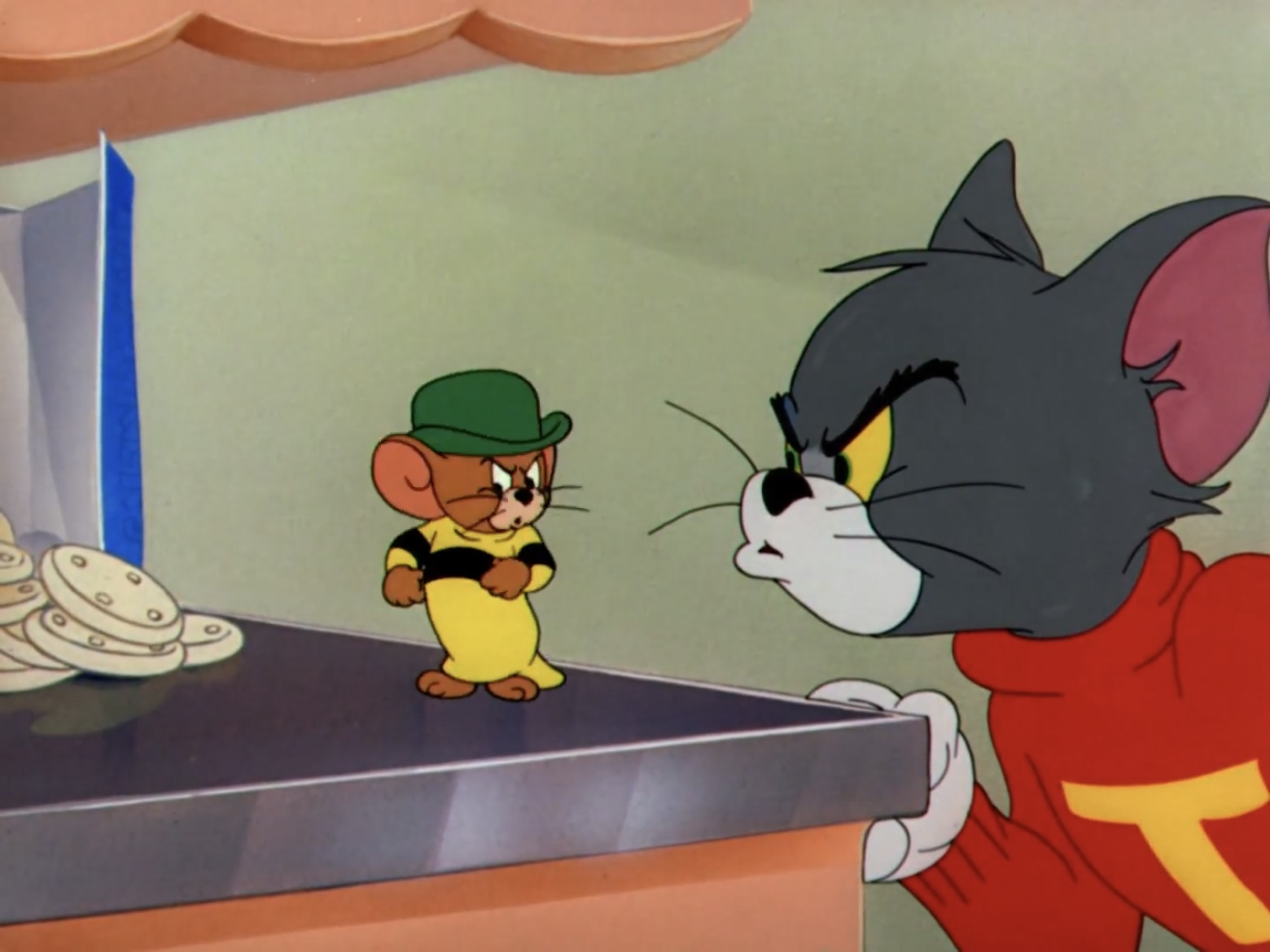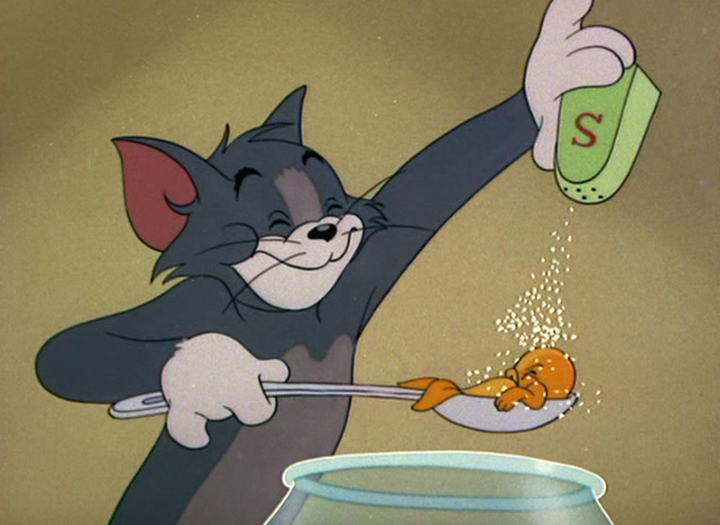
Sleepy-Time Tom is another Tom and Jerry gem.
In this short film Tom comes home from spending a night on the town with his cat buddies (Butch, Meathead and (according to the Tom and Jerry Wiki) Lightning (though his design looks different to me here)). When he gets home, he is dead tired and goes straight to sleep. However, Jerry has been raiding the ice box while he was gone. This causes Tom's owner to be so upset that she says she will kick him out if he falls asleep while Jerry is stealing food. Tom does all he can to stay awake.
This cartoon is a perfect showcase for Tom as a character. Though Jerry is also in this film, Tom is clearly the star. Tom completely shines here. Much of what makes this cartoon work is the character animation for Tom. Once again, he doesn't say a word here, but we can see every thought he is thinking. Because of this he feels more real to us than many characters in live action movies. There is not a single scene in this cartoon where we cannot relate to and understand Tom. We all have had times when there was work to do but we felt dead tired. The animation here so perfectly captures this that as much as we enjoy the slapstick comedy, we also really feel sorry for Tom. This also shows one of the main ingredients for why Tom and Jerry stands out among the many series of chase cartoons. Tom doesn't have to be a bad guy or a villain. He is a relatable character that we all see a little of ourselves in. This is because he is just like us, a guy simply trying to do his job. This makes it more appealing than simply watching an evil villain chase after an innocent hero.
While this cartoon may not be as consistently hilarious as some other Tom and Jerry films, when the gags land, they land beautifully. No matter how many times I watch this cartoon, the coffee scene and the ending always make me laugh out loud.
The credited animators on this film include Ed Barge, Kenneth Muse, Irven Spence and Ray Patterson. It would be reissued to theaters in 1958 and again in 1966.
Below is the movie poster for this film.




















